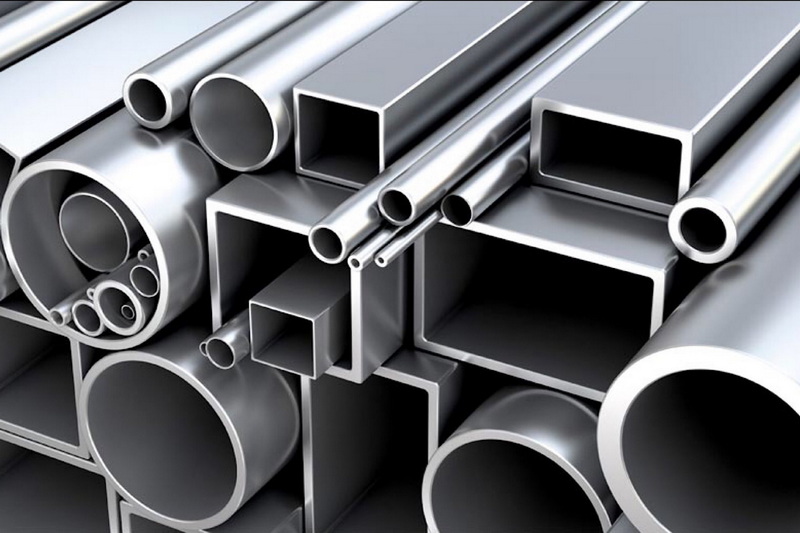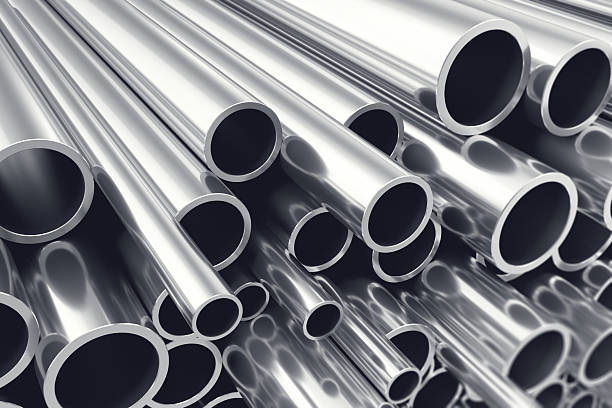English


Views: 222 Author: Tomorrow Publish Time: 2025-07-07 Origin: Site











Content Menu
● 1. Sustainability and Green Manufacturing
● 2. Advanced Manufacturing Technologies
● 3. Market Dynamics and Demand Shifts
● 4. Material Innovation and Specialized Alloys
● 5. Emphasis on Circular Economy and Recycling
● 6. Workforce Transformation and Skill Development
● 7. Growth in Stainless Steel Banding and Specialized Applications
● 8. Regional Market Developments
>> China
>> Europe
● 9. Product Innovation and New Grades
● 10. Integration with Emerging Industries
● FAQ
>> 1. What is driving the shift toward sustainable stainless steel manufacturing in 2025?
>> 2. How is automation impacting stainless steel production?
>> 3. Which industries are the largest consumers of stainless steel in 2025?
>> 4. What new stainless steel alloys are emerging in 2025?
>> 5. How is the stainless steel industry addressing workforce challenges?
Stainless steel manufacturing is poised for significant transformation in 2025, driven by evolving market demands, technological innovations, and sustainability imperatives. As a critical material in industries ranging from construction and automotive to renewable energy and healthcare, stainless steel's role continues to expand, necessitating advancements in production methods, material properties, and supply chain management. This article explores the top trends shaping stainless steel manufacturing in 2025, highlighting innovations, market dynamics, and environmental considerations that will define the industry's future.

Sustainability is the foremost trend influencing stainless steel manufacturing in 2025. The industry is aggressively moving toward net-zero carbon emissions by adopting cleaner production processes. Key initiatives include:
- Hydrogen-based steelmaking: This method replaces traditional carbon-intensive blast furnaces with hydrogen as a reducing agent, drastically cutting CO₂ emissions. It is gaining traction particularly in Europe and Asia.
- Carbon capture and utilization technologies: These are being integrated to capture emissions from steel plants, reducing the carbon footprint of production.
- Increased use of recycled stainless steel: Recycling reduces raw material consumption and energy use, aligning with environmental, social, and governance (ESG) goals.
- Shift to electric arc furnaces (EAFs): EAFs use electricity, often from renewable sources, to melt scrap steel, significantly lowering emissions compared to conventional methods.
These sustainable practices not only meet tightening global regulations but also respond to growing consumer and industrial demand for eco-friendly products. Manufacturers investing in these technologies gain competitive advantages by reducing operational costs and appealing to environmentally conscious markets.
Technological innovation is revolutionizing stainless steel fabrication and production efficiency. The integration of artificial intelligence (AI), automation, and digitalization is reshaping manufacturing workflows:
- AI-driven predictive maintenance reduces downtime by anticipating equipment failures, improving reliability and lowering costs.
- Robotic welding and automated quality control enhance precision and consistency, minimizing material waste and defects.
- Digital twins and IoT-enabled smart factories enable real-time monitoring and optimization of production processes, improving throughput and energy efficiency.
- 3D printing and laser-aided forming allow for complex, customized stainless steel components with reduced lead times and material usage.
These technologies support flexible, scalable manufacturing that can quickly adapt to changing market needs and product specifications, driving productivity gains and innovation in stainless steel products.
The global stainless steel market in 2025 is influenced by diverse regional and sectoral trends:
- Growing demand from construction and infrastructure: Urbanization and large-scale infrastructure projects worldwide increase the need for durable, corrosion-resistant stainless steel components.
- Expansion in automotive and aerospace industries: Stainless steel's strength and resistance to corrosion make it essential for vehicle manufacturing, especially in hybrid and internal combustion engine vehicles.
- Renewable energy sector growth: Stainless steel is crucial in wind turbines, solar panels, and energy storage systems due to its longevity and environmental resistance.
- Stable demand in food and pharmaceutical industries: Hygienic and corrosion-resistant properties maintain stainless steel's importance in these sectors.
However, the market faces challenges such as fluctuating raw material prices, oversupply in some regions, and geopolitical tensions affecting trade flows. For example, Europe experiences competitive pressure from Asian imports but may see some stabilization with upcoming trade measures. Meanwhile, the US market is shaped by domestic policies and evolving energy and automotive trends.
Advances in metallurgy are producing new stainless steel alloys tailored for specific applications. These innovations focus on enhancing performance characteristics such as:
- Improved corrosion resistance for harsh environments, including marine and chemical industries.
- Higher strength-to-weight ratios to reduce material usage while maintaining durability, critical for automotive and aerospace sectors.
- Heat and wear resistance for power generation and industrial machinery.
- Non-toxic and hygienic surfaces for food processing and medical devices.
Such specialized alloys enable manufacturers to meet increasingly stringent technical requirements and regulatory standards while expanding stainless steel's applicability.

The stainless steel industry is embracing circular economy principles by increasing the use of recycled materials and designing products for end-of-life recyclability. This approach reduces environmental impact and raw material dependency, ensuring supply chain resilience. Manufacturers are:
- Enhancing scrap collection and processing capabilities.
- Developing closed-loop recycling systems.
- Promoting product designs that facilitate disassembly and material recovery.
This trend aligns with global sustainability goals and regulatory frameworks, as well as consumer demand for responsible manufacturing.
As automation and digital technologies become pervasive, the stainless steel manufacturing workforce is evolving. There is a growing need for:
- Skilled workers proficient in operating and maintaining advanced machinery.
- Technicians capable of managing AI systems, robotics, and data analytics.
- Continuous training programs using augmented reality (AR) and virtual reality (VR) for immersive learning experiences.
This shift helps companies improve operational efficiency and safety while addressing labor shortages and enhancing workforce adaptability.
An important niche within stainless steel manufacturing gaining momentum in 2025 is stainless steel banding. Valued at over $100 million and expected to grow steadily, stainless steel banding is increasingly adopted in packaging, construction, and automotive sectors. Its corrosion resistance and strength make it ideal for securing heavy or sensitive goods, reinforcing structures, and fastening components where durability is critical. Leading companies focus on innovation, product diversification, and sustainability in banding materials, reflecting broader industry trends toward eco-friendly solutions and customized applications.
The U.S. stainless steel market is projected to grow at a compound annual growth rate of around 6% through 2033. Environmental regulations and sustainability initiatives are major drivers, pushing manufacturers to adopt greener production methods and increase recycled content. The construction sector is increasingly using stainless steel in green building projects, while the automotive industry incorporates stainless steel components to improve vehicle longevity and meet emissions standards. The rise of electric vehicles further boosts demand for lightweight, corrosion-resistant materials.
China remains a dominant player in stainless steel production and consumption. In 2025, Chinese manufacturers continue to expand capacity, invest in advanced technologies, and optimize supply chains. The government's commitment to reducing carbon emissions encourages adoption of cleaner manufacturing processes. Chinese stainless steel products, including coils and sheets, are vital to both domestic infrastructure projects and export markets, contributing significantly to global supply.
Europe is at the forefront of sustainable steelmaking, with widespread adoption of hydrogen-based production and carbon capture technologies. European manufacturers lead in developing low-emission stainless steel products, such as those with significantly reduced carbon footprints. The region faces competitive pressures from imports but leverages regulatory frameworks and innovation to maintain market strength.
Manufacturers are introducing new stainless steel grades to meet specialized needs. For example, A4 stainless steel, part of the marine-grade 316 family, offers exceptional corrosion resistance in harsh environments. Innovations in 3D-printed stainless steel components allow for complex shapes and customized properties, opening new possibilities in medical, industrial, and marine applications. Companies are also launching product lines with drastically reduced carbon footprints by incorporating bio-based materials and optimizing production steps.
Stainless steel is increasingly integral to emerging sectors such as renewable energy, electric vehicles, and advanced medical devices. Its durability, corrosion resistance, and hygienic properties make it indispensable for wind turbine components, battery housings, and sterile medical equipment. As these industries grow, stainless steel manufacturers are tailoring products and processes to meet their evolving requirements.
The stainless steel manufacturing industry in 2025 is at a pivotal juncture, driven by sustainability imperatives, technological advancements, and shifting market demands. Green manufacturing practices, including hydrogen steelmaking and carbon capture, are reducing environmental impacts, while AI and automation are boosting production efficiency and quality. Market dynamics reflect growing demand from construction, automotive, and renewable energy sectors, tempered by raw material price volatility and trade challenges. Innovations in alloy development and circular economy practices further position stainless steel as a versatile, future-ready material. Regional developments in the U.S., China, and Europe underscore the global nature of these trends. Finally, workforce transformation ensures the industry can harness new technologies effectively. Together, these trends underscore a robust and evolving stainless steel manufacturing landscape poised for sustainable growth and innovation.

The shift is driven by global regulatory pressures to reduce carbon emissions, consumer demand for eco-friendly products, and the industry's commitment to net-zero goals. Technologies like hydrogen-based steelmaking, carbon capture, and increased recycling are central to this transformation.
Automation, including AI-driven predictive maintenance, robotic welding, and digital twins, is enhancing production efficiency, reducing waste, and improving product quality. It enables real-time process optimization and lowers operational costs.
Key industries include construction and infrastructure, automotive and aerospace, renewable energy, and the food and pharmaceutical sectors. Each relies on stainless steel for its durability, corrosion resistance, and hygienic properties.
Innovations focus on alloys with enhanced corrosion resistance, higher strength-to-weight ratios, improved heat and wear resistance, and hygienic surfaces tailored for specialized industrial, automotive, and medical applications.
The industry is investing in upskilling workers to manage advanced manufacturing technologies, using AR and VR for training, and focusing on attracting talent capable of working with AI, robotics, and digital systems.
Seven Requirements for External Doors And Windows of Passive Rooms
How Much Do You Know about The Design Standards for Aluminum Alloy Door And Window Dimensions?
Welding Vs Stainless Steel Fabrication: Understanding The Manufacturing Process Differences
Stainless Steel Fabrication Vs Powder Coated Steel: Durability And Cost Comparison
CNC Machining Vs Stainless Steel Fabrication: Pros And Cons for Industrial Use
Stainless Steel Fabrication Vs Carbon Steel Fabrication: Key Differences Explained
Stainless Steel Fabrication Vs Aluminum Fabrication: Which Is Right for Your Project?
Stainless Steel Grades 201 Vs 304: Cost Vs Performance Breakdown
316L Vs 316 Stainless Steel Grades: Which Is Better for Corrosion Resistance?
